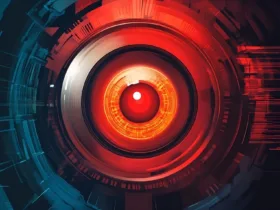Researchers at the University of California, San Diego have designed an AI-enabled robot that can perform a waltz simply by mirroring the movements of its human partner. As far as we can tell, the robot was even able to perform the ballroom dance without stepping on its partner’s toes.
To create their dancing robot, the team first designed an AI model trained on videos of human movements and then integrated it into two bipedal Unitree G1 robots. Using another model, those robots could then analyze the movements of people in front of them and imitate those movements themselves. The result was a humanoid robot that could walk, dodge, crouch and dance seamlessly by copying a human.
[ Related: The 11 weirdest things humans did to robots in 2024 ]
Robotics researchers don’t shy away from letting their machines perform over-the-top stunts. From complicated dance routines to impressive parkour moves, the internet is full of robots behaving bizarrely. But most of these examples typically involve pre-programmed, highly choreographed scripts. In this case, researchers wanted to see if they could teach a robot to learn movements more organically.
To do that, they first needed a powerful brain with good basic knowledge. The researchers collected a database of human motion tracking data and used it to build out an AI model they called ExBody2. They trained the model in a simulation environment using reinforcement learning until it had a broad understanding of how to articulate and move many parts of a robot body. They then implemented ExBody2 in a pair of robots equipped with a different model that sucked in real-world physical data captured by the robot’s cameras. The robot could quickly compare the movements it ‘saw’ in front of it with its basic training.
Videos of the robot in action shows him pacing outsidesidestepping like an athlete (or trying a foxtrot?), drawing circles with his arms, crouching and throwing punches. Some demonstrations show how one of the researchers performs the first movements next to the robot. After about a second of delay, the robot dutifully repeats the movement. Researchers say this approach is useful because it means the robot can adapt better than others, which require new training sets every time it has to perform a new movement.
Mirroring robots can speed up training and reduce costs
This isn’t the first example of a copycat robot. Last year, researchers at Stanford used a similar AI model to teach a 6-foot humanoid robot to box and play rudimentary tennis, all by “shadowing” human movements. Like ExBody2, the robot also uses an AI trained on motion tracking data.
[ Related: Researchers tortured robots to test the limits of human empathy ]
“By mimicking humans, humanoids can potentially take advantage of the rich repertoire of skills and movements that humans exhibit, offering a promising path toward achieving general robot intelligence,” the authors said. wrote in a paper detailing their results.
This approach to robot movement is not just about novelty. Researchers believe that mirroring or shadowing could reduce the need to repeatedly train robots, which could help speed up their development and reduce costs. At the very least, the technology shows that a rudimentary robot dance partner is possible.













Leave a Reply